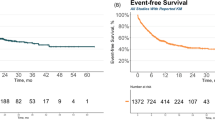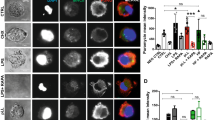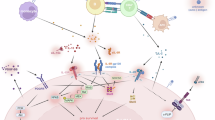Abstract
Recent studies have shown that cyclosporin A, an undecapeptide extracted from two species of fungi (Cylindrocarpon lucidum and Tricoderma polysporum), has potent immunosuppressive effects with low myelocytotoxicity1. In different experimental systems in both animals and humans, cyclosporin A administration decreased antibody production to T cell-dependent antigens, prolonged survival of skin, kidney and heart allografts1–3, inhibited cytotoxic activity generated in the allogeneic mixed lymphocyte reaction4 and abrogated suppressor T-cell activity induced by concanavalin A (ref. 5). However, the mode of action of cyclosporin A and its role in establishing tolerance remains unclear. Continuous proliferation of T cells after stimulation with antigens or mitogens is maintained by growth factors, released by lectin- or antigen-activated T cells5,6. One of these factors, interleukin 2 (IL-2), supports growth of activated but not of resting T cells5–6, so that, to achieve a proliferative response a cell population must be ‘activated’ both to produce IL-2 and to become responsive to it. In the autologous mixed lymphocyte reaction (AMLR), purified human T lymphocytes proliferate when co-cultured with autologous B cells and/or macrophages7,8. Recently, we found that antibodies against either the heavy non-polymorphic chain or the light polymorphic chain of HLA-DR antigens of the stimulator cells, prevented T cells from acquiring responsiveness to IL-2, inhibited the production of the growth factor and abrogated the T-cell proliferative response in AMLR and hapten-labelled autologous cell systems9,10. These results suggested that the HLA-DR antigens rendered resting T cells sensitive to IL-2 and participated actively in the production of the growth factor. We have now studied the effect of cyclosporin A on the AMLR response, and found that the drug inhibited the proliferative response by blocking the receptors for HLA-DR antigens on T cells.
This is a preview of subscription content, access via your institution
Access options
Subscribe to this journal
Receive 51 print issues and online access
$199.00 per year
only $3.90 per issue
Buy this article
- Purchase on SpringerLink
- Instant access to full article PDF
Prices may be subject to local taxes which are calculated during checkout
Similar content being viewed by others
References
Borel, J. F., Feuer, C., Gubler, H. U. & Stahelin, H. Ag. Actions 6, 468–475 (1976).
Borel, J. F. Immunology 31, 631–641 (1976).
White, D. J. G., Calne, R. Y. & Plumb, A. Transplant Proc. 11, 855–859 (1979).
Horsburgh, T., Wood, P. & Brent, L. Nature 286, 609–611 (1980).
Palacios, R. & Möller, G. J. exp. Med. 153, (1981).
Smith, K. A. Immun. Rev. 51, 338–357 (1980).
Palacios, R., Llorente, L., Alarcón-Segovia, D., Ruiz-Arguelles, A. & Diaz-Jouanen, E. J. clin. Invest. 65, 1527–1530 (1980).
Opelz, G., Takasugi, M. & Terasaki, P. I. J. exp. Med. 142, 1327–1333 (1975).
Palacios, R. et al. (submitted).
Palacios, R., Möller, G., Claesson, L. & Peterson, P. A. (submitted).
Larsson, E. L. J. Immun. 124, 2828–2833 (1980).
Elliot, B. E., Nagy, Z., Nabhlz, M. & Pernis, B. Eur. J. Immun. 7, 287–291 (1977).
Engleman, E. G., Benike, C. J. & Charron, D. J. J. exp. Med. 152, Suppl., 114–126 (1980).
Elliot, B. E., Nagy, Z. A., Ben-Neriah, Y. & Givol, D. Nature 285, 496–498 (1980).
Palacios, R. (submitted).
Bonnard, G. D., Yasaka, K. & Maca, R. D. Cell. Immun. 51, 390–401 (1980).
Author information
Authors and Affiliations
Rights and permissions
About this article
Cite this article
Palacios, R., Möller, G. Cyclosporin A blocks receptors for HLA-DR antigens on T cells. Nature 290, 792–794 (1981). https://doi.org/10.1038/290792a0
Received:
Accepted:
Issue date:
DOI: https://doi.org/10.1038/290792a0
This article is cited by
-
An immunohistochemical study on the effects of cyclosporin on the gut-associated lymphoid tissue of rats
Gastroenterologia Japonica (1991)
-
Soluble inhibitors of T lymphocyte proliferation: Tools for dissecting pathways of T cell activation
Immunologic Research (1988)
-
Second-line drug treatment in rheumatoid arthritis associated with depressed autologous mixed lymphocyte reaction
Rheumatology International (1986)



